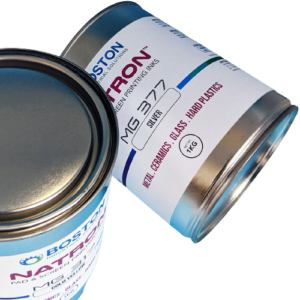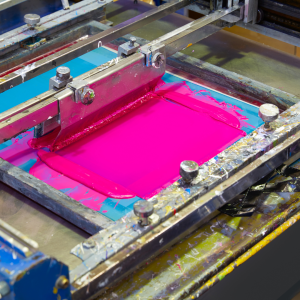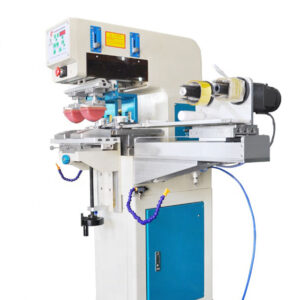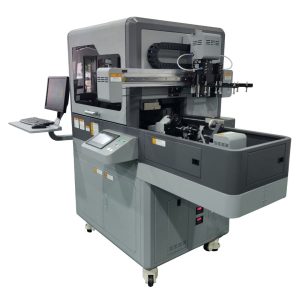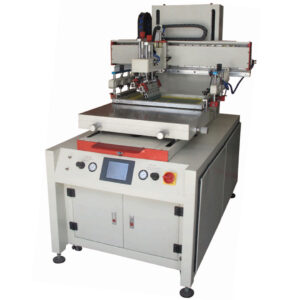Silicone screen printing inks are becoming popular across many industries because of their versatility, durability, and affordability. Additionally, these inks are sustainable—not harmful to the environment or humans. Silicone inks play an important role in decorating, marking, and printing both hard goods, such as silicone rubber parts, and textiles. It is therefore important to understand the different types of silicone inks available and how they open a world of possibilities for manufacturers, designers, and printers alike.
It is important to note that while all silicone inks are 2-component, the are not solely designed to print on silicone rubber parts. These inks print on fabrics as well as other materials such as glass or metal. To achieve excellent bond with these material, we recommend using a silicone primer (silicone adhesion promoter).
Pad printing silicone inks
Pad printing silicone inks are designed specifically for pad printing machines. These printing machines print 3D hard goods. A key feature of pad-printed silicone inks is their high opacity.
For example, consider the SE Series ink. The SE Series silicone ink is a pad printing ink that adheres perfectly to any silicone product, including swim caps, wristbands, and more. Additionally, their exceptional adhesion properties, resistance to chemicals, and environmental factors make them suitable for applications in the medical, automotive, and promotional product industries.
To use the SE ink series, add the TRM or SF solvent to lower the ink’s viscosity. The low viscosity allows the ink to transfer seamlessly from the pad printing plate onto the substrate. Learn more about Boston Industrial Solutions, Inc., pad printing silicone inks.
Screen printing ink
There are two types of screen-printing silicone inks. These are inks for printing on silicone rubber and textiles. While both inks are silicone-based, they have different applications and properties.
Screen printing silicone inks for silicone rubber, on the other hand, have a lower viscosity compared to textile inks. Additionally, these inks for printing on silicone rubber dry at higher temperatures. The high temperature allows them to bond with silicone rubber. It is important to note that silicone ink is the only type of print that can adhere to silicone and withstand high temperatures, just like silicone rubber does. Please keep in mind that only silicone-based ink can stick to silicone rubber.
Generally, screen printing inks for textiles have a higher viscosity compared to screen printing inks for hard goods. These inks have excellent blocking and anti-migration features, which make them excellent for printing on polyblends and cotton. Unlike plastisol, textile silicone inks dry in seconds at much lower temperatures. Learn more about the different types of textile silicone inks.
What are the different types of silicone ink for textiles?
There are various types of textiles silicone ink. Here is a list of the most common types of silicone inks.
- High-density silicone ink, an excellent alternative to plastisol. This HD ink has excellent printability and screen stability. It is perfect for printing on cotton, cotton-blend fabrics, polyblends, etc. Additionally, this type of ink has a high pigment ratio, which provides for high-opacity prints.
- Anti-slip silicone ink, also known as dotting or grip silicone, has a higher tack and tensile strength compared to other silicone inks. This is the perfect ink for printing on anti-slip socks and gloves.
- Glossy silicone ink is used as a clear coat when printing on fabrics. The finish is a high-gloss, round finish. It is also possible to tint this ink and print high-gloss colors. This screen-printing ink is suitable for both machine and manual printing, and it produces excellent glossy prints. Additionally, the prints level quickly and have no bubbles.
- Embossing Silicone ink is used to print or create raised or sunken 3D designs on fabrics. The process typically involves creating a mold with the desired design and then pressing the fabric material into this mold. The pressure and temperature applied during this process help transfer the design onto the fabric surface, resulting in raised or sunken areas, depending on the mold’s design.
It is important to note that, in addition to these inks, silicone additives, pigments, and colorants are also available. Do you have any questions, please visit our YouTube channel or our support hub.


